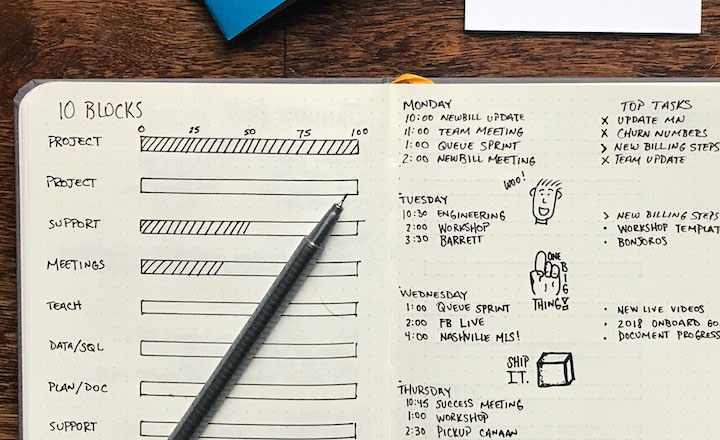Hub Southern Cross member Rajiv Jayarajah from Bare Inc is an expert at goal setting as well as business and personal development.
He’s shared some of his main tips for goal setting and business planning, so you can revisit your own monthly goals for 2019 and make sure you’re on the right track!
Setting goals is exciting, but achieving them can be difficult.
Research shows that by the first week of January, 1 in 3 people have already failed their New Year’s Resolutions (Norcross and Vangarelli, 1988).
Another study found that only 45% make it to July (Norcross, Mrykalo and Blagys, 2002) – however, it doesn’t have to be that way. By using a clever new strategic approach, you can conquer 2019.


Unfortunately, hope is not a plan.
Here are six steps you need to undertake to ensure you have a kick-ass 2019:
- Reflect on 2018
- Start with the end in mind
- Set monthly goals
- Create a plan
- Execute
- Monitor and Adapt
Step 1 – Structured Reflection
Start by completing a structured reflection of your previous year. When most people do this, they tend to remember the peaks, troughs, and the most recent events.
Instead, I ask my clients to examine their year through this lens:
- What would you keep doing and why?
- What would you stop doing and why?
- What would you start doing?
If you lead a team or have employees in your business, ask them these same questions and look for common themes across all of your answers.
Read more: How Great Managers Delegate to Their Teams
If you’re doing this solo, try talking through your answers with a trusted friend or advisor to see if they can spark any new ideas – the key is to take a balanced view of your year instead of focussing on the most recent events.
Step 2 – Visualise success
Once you’ve completed your reflection, cast your mind forward 12 months to develop a clear a picture of what success looks like. The format may vary based on your personal style – some of my clients use spreadsheets, some vision boards, and others have written letters to their future selves.
The point isn’t to be prescriptive – the critical part is getting into detail.
For example, if you want to grow your business what does that actually look like? Is there a specific number of clients, a sales target, or is your goal a broader measurement?


Once you’ve developed your vision for the year, ask yourself “what will this give me that I don’t have today?”
If your vision includes spending less time on your business, what will you do with the extra time? Will you pursue a hobby, build another part of your business, or spend more time with your family?
Whatever your drivers, document these too – they will become the fuel required to overcome any setbacks.
Read more: How to Avoid Burnout at Work and at Home
Step 3 – Set monthly goals
Now you have your vision in place, it’s time to convert it into monthly goals and milestones.
At the start of the year, 12 months seems like plenty of time to get everything done – until December rolls around and everyone wonders where the year went!
I recommend setting monthly goals because “breaking down any long-term goals into smaller more attainable goals helps promote achievement and success” (Psychology Today, 2019).
For example, if you want to acquire 100 new clients in a year, break it down into monthly goals.
This might mean your client acquisition numbers start small and progressively ramp up as you build and perfect your approach.
Similarly, if your goal is to find a new job, you might set yourself a goal of applying for a specific number of roles each month.
Read more: How ‘Language Your Way’ is Thriving in a Global Market
Step 4 – Create a plan
Once you’ve developed your monthly goals, you need to build a corresponding method to achieve them.
Start off by assessing your current situation against your goal.


Once you have a clear picture of your current situation you can map this against the vision you developed in Step 2 and identify all critical gaps. The focus then becomes on developing a range of options you might put in place to achieve success.
Make sure your plan also takes into account the resources required to achieve your goal.
I advise clients to look at resources beyond financials, and also consider people, systems, processes and time.
Taking this approach will give you a deeper understanding of the investment required to achieve your goal and may help you discover untapped resources.
Step 5 – Execute
The majority of plans people fail not because of poor execution, but because they are never executed to begin with. A common factor that stops people from implementing plans is fear, whether of failure or success.
A way to overcome this is to set yourself a launch date, and drive accountability by telling other people.


Step 6 – Monitor and Adapt
When I started my career in banking in 2004, before ‘big data’ was a buzzword, a colleague told me “what gets measured gets managed”. Years on, and she’s still right.
When it comes to achieving goals, don’t trawl through big data and give yourself analysis paralysis.
The key to success is selecting a handful of key metrics that are actionable, and tracking them on a regular basis. To do this, you need to reverse engineer.
Many people say they want to improve their business – but this is a broad goal.
Instead, we spend time defining what an improved business might be. If you want to improve your revenue, tracking it over time is easy – but it’s unclear what control you have over.
A way of refining it further could be by establishing:
– the number of new leads
– percentage of leads converted
– Average sale value
From these metrics, you may decide that % of leads converted is the key metric you have the most control over. This becomes one of the vital parameters you track, and influences you to achieve your goal.
Summary
If you want to have a kick-ass year, you need to implement the above steps.
Don’t overcomplicate it.
“Results from a review of laboratory and field studies on the effects of goal setting on performance show that in 90% of the studies, specific and challenging goals led to higher performance than easy goals, “do your best” goals or no goals” (Locke et al., 1981).
If you’re looking for help on how to develop your vision or other specific areas, please visit Bare Inc






